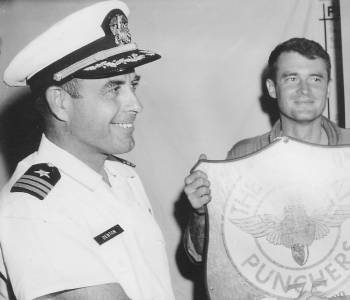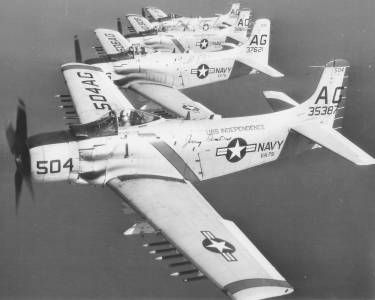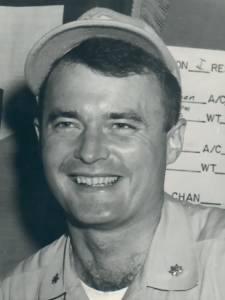| |
|
|
|
William Francis Coakley
Lieutenant Commander
VA-153, CVW-15, USS CONSTELLATION, TF 77, 7TH FLEET United States Navy Lenox, Massachusetts August 12, 1933 to September 13, 1966 WILLIAM F COAKLEY is on the Wall at Panel 9E, Line 132 See the full profile or name rubbing for William Coakley |
  |
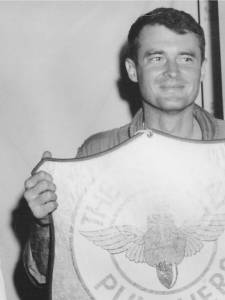
|
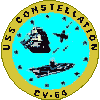
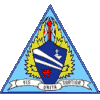
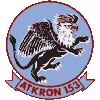
| |
|
My daughter played in the Lenox High School Memorial band when you were returned to the States. You were the only serviceman killed from Lenox. I just wanted your name on this wall so you would be remembered. I did not know you, but every person who died should be on this wall. GOD BLESS AMERICA AND ALL THE FREEDOMS YOU DIED FOR!
A memorial initiated by someone who remembers. |
|
In 1962, my Dad was serving with Attack Squadron 75 (VA-75) embarked in USS INDEPENDENCE. This photo shows him with then-Commander Jeremiah Denton. When VA-75 transitioned to the A-6A INTRUDER, Commander Denton became the Commanding Officer. He and his bombardier-navigator, Bill Tschudy, were shot down near Than Hoa on 18 July 1965 and endured nearly 7 years of captivity before being released on 12 February 1972. Commander Denton retired from the Navy as a Rear Admiral and afterwards served as a Senator from Alabama.
This photo was taken during the 1962 cruise. It is signed by each of the four pilots - from the bottom upwards they are Jeremiah Denton, Bill Boissenin, my father, and then Bob Starling.
If you knew him please email me at
From his daughter, 07 Aug 2003 I've just received an e-mail from my dad's Commanding Officer, then-Commander Dave Leue', while he was in Attack Squadron 153 on board the USS Constellation. It has a picture of him taken about four months before his death:
I'm very grateful to Captain Leue', and to all the other men who served with and remember my father. Tammy Yatin |
|
Bill Coakley and I entered flight training on the same day in July, 1954, as Naval Aviation Cadets. (NAVCADS). Both from Massachusetts, we met on the airline flight to Pensacola, became good friends, and went through flight training together. In pre-flight, we nicknamed Bill, "Cautious Coakley" because he was never present when the rest of us were marching off demerits on Saturdays. Bill was not only first in our class, he became the regimental commander, the number one cadet in our regiment. His progress in basic flight training was equally stellar. He wanted jets for Advance training, but needs of the Navy sent him to Seaplane training in Corpus Christi, Texas. Upon receiving his wings, Bill volunteered to return to Pensacola as a flight instructor as a path to getting into jets. Finishing his tour as a flight instructor, he was further disappointed by assignment to a transport squadron. Continuing to excel, he got a master's degree from Harvard and was assigned to the White House as an aide to President Johnson. Now he had some clout. His next assignment was to an A-4 Skyhawk attack squadron, but Bill and his dream were short lived. He gave the last full measure of devotion to his country when he was shot down over the Ho Chi Minh trail. I wrote the following poem for Bill, a great friend and a dedicated Naval officer. I have missed him.
From a friend, |
A Note from The Virtual WallOn 13 Sep 1966, two A-4C SKYHAWKs of Attack Squadron 153 launched from USS CONSTELLATION on a night armed reconnaissance mission over North Vietnam. In this type of mission, one aircraft lights up the target using aerial flares while the other actually takes the illuminated target under attack.Captain Leue' has provided a description of the tactics used by Attack Squadron 153 during night armed reconnaissance missions: "After tanking on the way to the beach we split up, the wingman would go to 5000 feet, the leader would stay at 4000 feet. We operated lights out and coordinated by radio calling headings and speeds, the flare was the rendezvous point. The direction of runs was pre-briefed, usually north or south, up or down the road. We would coast in on radar, then find a pre planned bridge or ferry crossing on route 1 or 116. After the flares were dropped the lead would make a low pass (200'-300') under the flares to one side of the road and call the location of trucks to the wingman. Our runs were flat, we acquired the road as we rolled in, then the road led to the trucks. Usual weapons were snakeye retarded bombs, 20MM canon and CBU 2A. We would call "in" starting a run and "off" as we pulled up. The lead would coordinate the dropping of flares as required.Since the flight lead, LCDR O'Connell, observed the crash, saw no parachute, and was unable to establish radio contact with Coakley, Coakley was classed as Killed in Action/Body not Recovered. On 15 December 1988, the North Vietnamese turned over a number of human remains to U.S. control. On 23 May 1989 the government announced that the remains of LCDR William F. Coakley had been positively identified. |
| Contact Us | © Copyright 1997-2019 www.VirtualWall.org, Ltd ®(TM) | Last update 08/15/2019. |
